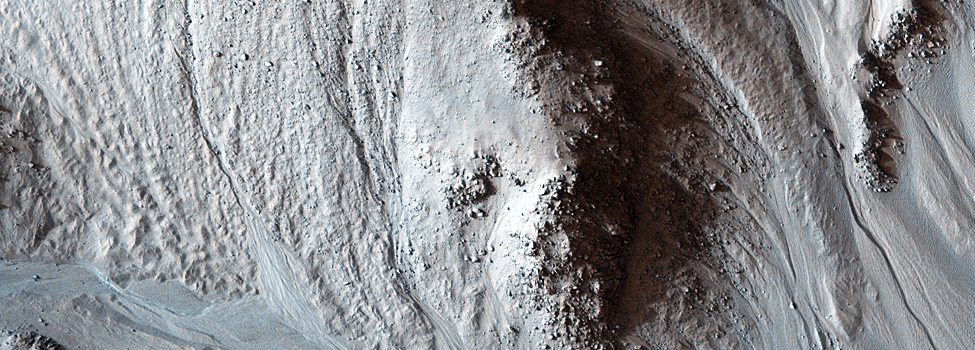Fluvial Processes Theme Description
Lead: Virginia Gulick •
Images in this theme

Perhaps more so than any other topic, the abundant evidence for past water activity on Mars has captured the attention and imagination
of members of the public and scientists alike. From the giant outflow channels to the ancient valley networks to the young valleys
and channels, to the gullies and even to the tiny seasonally active slope flows known as Recurrent Slope Lineae (RSL), Mars displays
a wide range of landforms, which may have been formed by running water.
However, four decades after the first signs of past Martian water were discovered, the exact processes, which carved many of these
features are still poorly understood. Some may have formed by water from melting glaciers or snow packs during periods of high obliquity,
by water runoff during a warmer, wetter period early in Mars' history, by hydrothermally driven ground-water outflow associated with
magmatic activity or impact crater formation, or to a lesser extent currently by seasonal brine flows in some locales. Major
clues to distinguishing, which mechanisms were most active may be found at the smallest scales within these fluvial features.
By clearly resolving meter-scale features, and by analyzing such landforms and their environs using high-resolution digital terrain
models (DTMs), HiRISE can help distinguish potential fluvial formation mechanisms and allow a better understanding of the
history of water on Mars.
Major Science Questions for This Theme
Major science questions include what do the presence of various fluvial landforms on different age surfaces tell us about past
climates, the planet’s water history, and the potential for habitable environments on Mars? What are the volumes and likely
durations of water activity in these environments?
Relationship to Other Science Themes
This theme is closely related to glacial, periglacial, climate change, seasonal, and mass wasting processes science themes. Understanding
the inter-relation of fluvial activity with these related processes on Mars is critically important to understanding Mars’ paleo-climatic
history, as it has been in unraveling past climate change on Earth.
Features of Interest Potentially Visible at HiRISE Scale
There are numerous features, which can be identified at HiRISE resolution, which would suggest fluvial or water-formed processes.
These include integrated tributaries formed in channel, valley, or gully source regions and distributary channels on aprons in channel,
valley, or gully terminal regions. Within these systems finding: 1) interior stream channels and terraces within the valleys, 2) areas
of ponding forming paleolakes where channels or valleys intersect craters (for example) forming inlet and/or outlet channels,
3) bends of channel meanders where higher fluid velocities have eroded into the channel banks and point bars where flow velocities
are lower and the stream deposits some of the sediment load. Additional fluvial landforms also include: areas of deposition such as
bars and ripples on the channel floors and areas of erosion manifested as channel scouring, such as grooves and pits.
